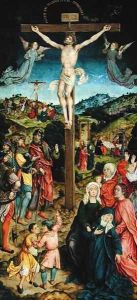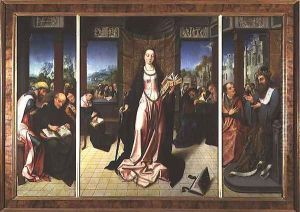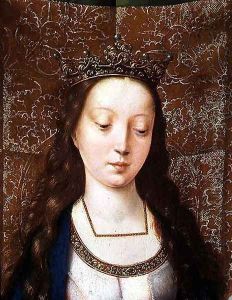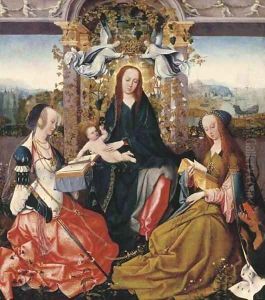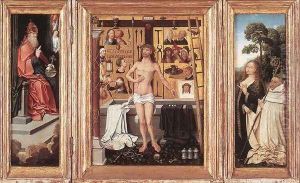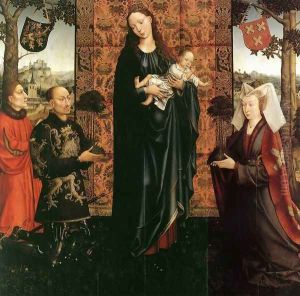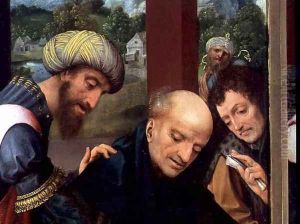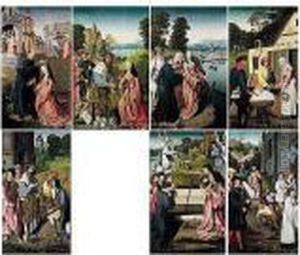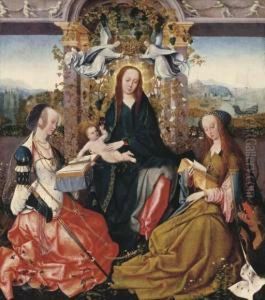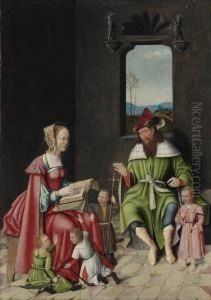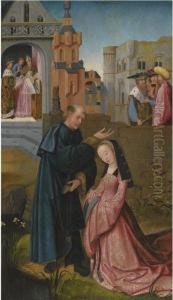Goossen van der Weyden Paintings
Goossen van der Weyden, born in 1455, was a notable Flemish Renaissance painter and the grandson of the famed Early Netherlandish painter Rogier van der Weyden. Despite the towering legacy of his grandfather, Goossen carved out his own place in the world of art, primarily through his works that often mirrored the stylistic elements and thematic concerns prevalent during the Northern Renaissance.
His artistic journey began under the shadow of his illustrious family name, but Goossen managed to develop a unique style that, while reflective of his grandfather's influence, also showcased his own interpretations and skills. His works are characterized by a keen attention to detail, a masterful use of color, and a profound sense of composition, which were highly regarded during his time.
Goossen van der Weyden's career flourished in Antwerp, a vibrant center for the arts in the 15th and 16th centuries. Here, he became an active member of the Guild of St. Luke, an association of painters, sculptors, and other artists, which played a crucial role in his development and exposure. His contributions to the artistic scene in Antwerp include both religious and secular subjects, reflecting the diverse demand of the period's art patrons.
Despite the abundance of talent during the Renaissance, Goossen managed to secure commissions and gain recognition for his work. However, much like many artists of his time, the specifics of his life and career are not thoroughly documented, leading to a certain degree of obscurity surrounding his achievements.
Goossen van der Weyden's death around 1543 marked the end of an era that bridged the gap between the Early Netherlandish painting of his grandfather and the evolving styles of the 16th century. Although not as widely celebrated as Rogier, Goossen’s contributions to the Flemish Renaissance and his role in perpetuating the van der Weyden legacy in art history are undeniable. Today, his works are appreciated for their beauty and historical value, offering insights into the artistic transitions of the period.
